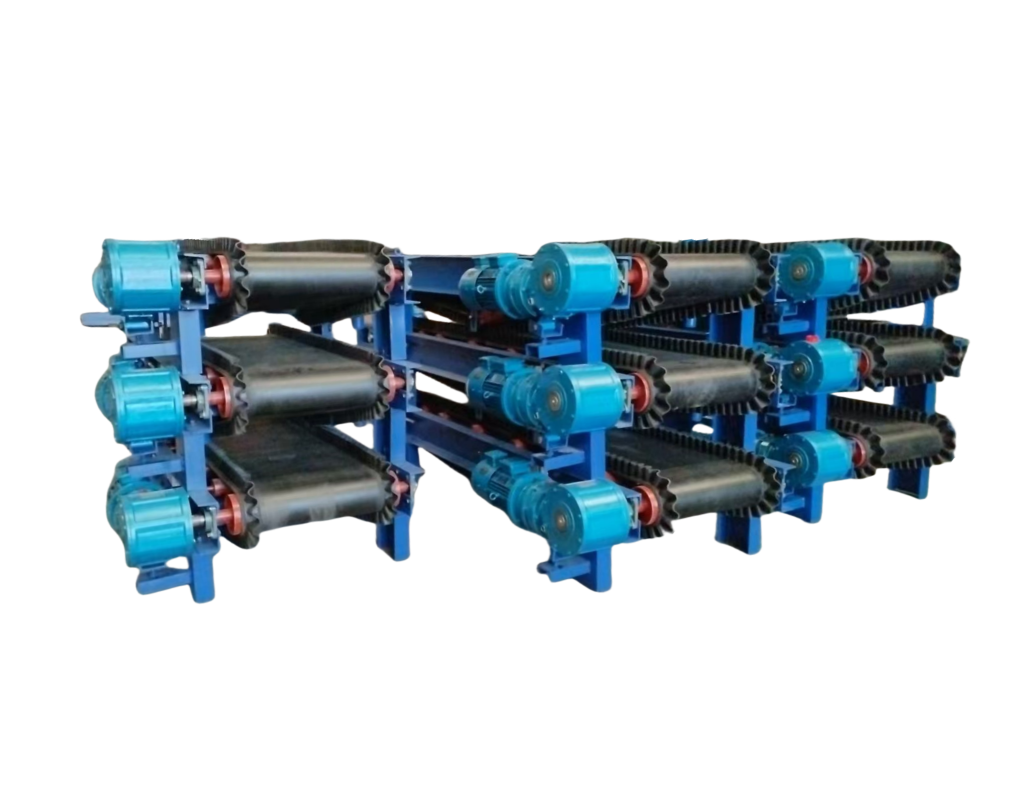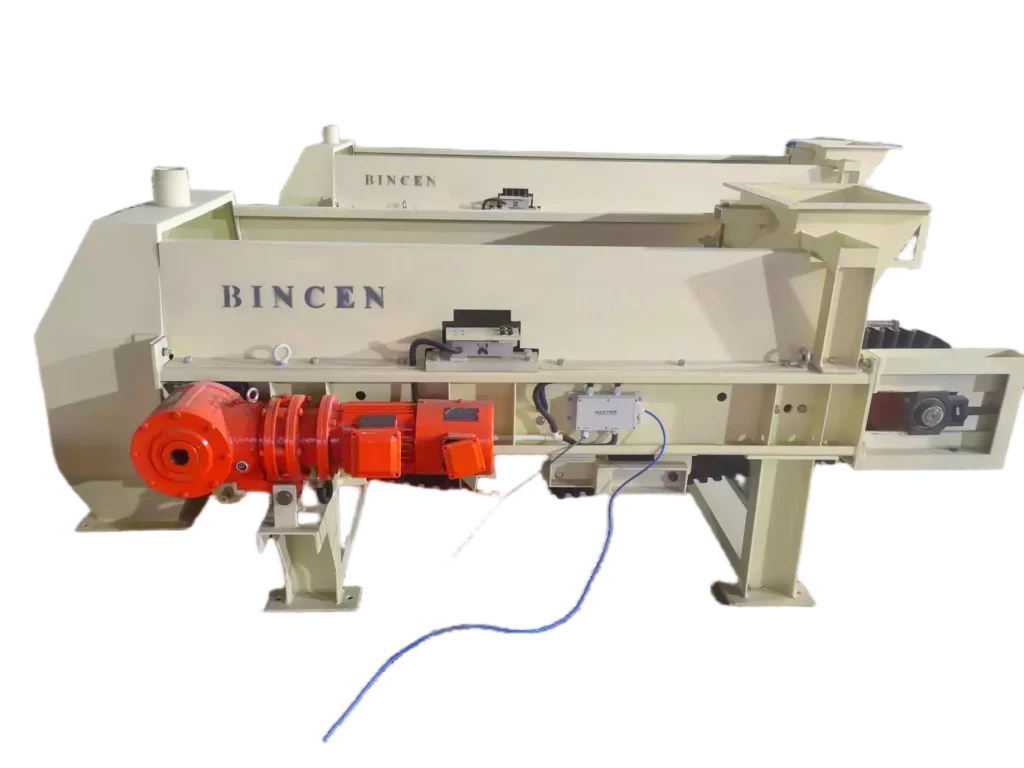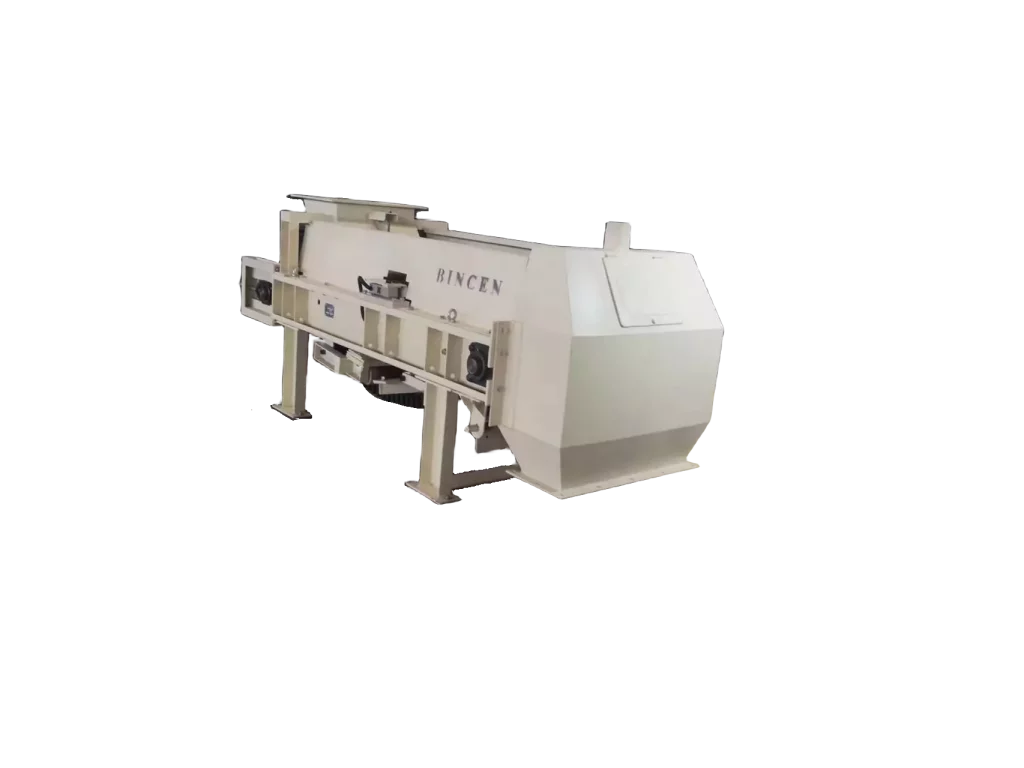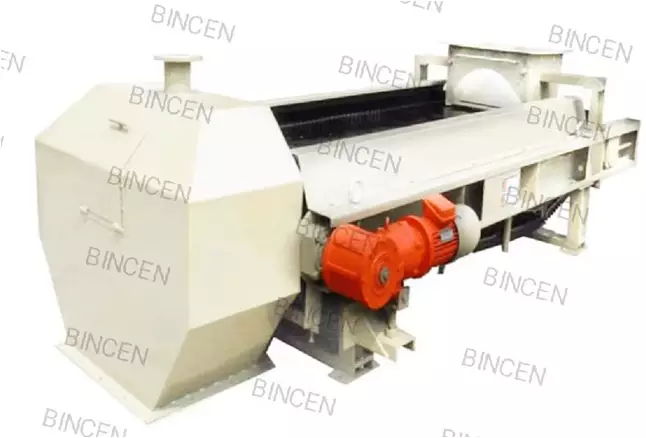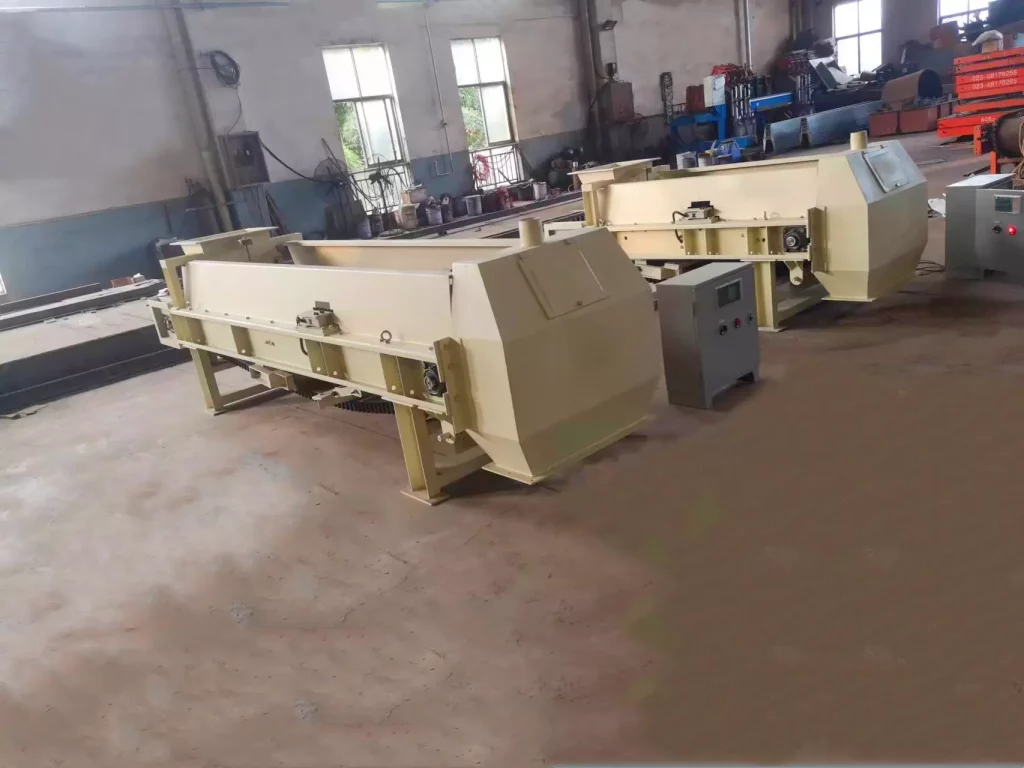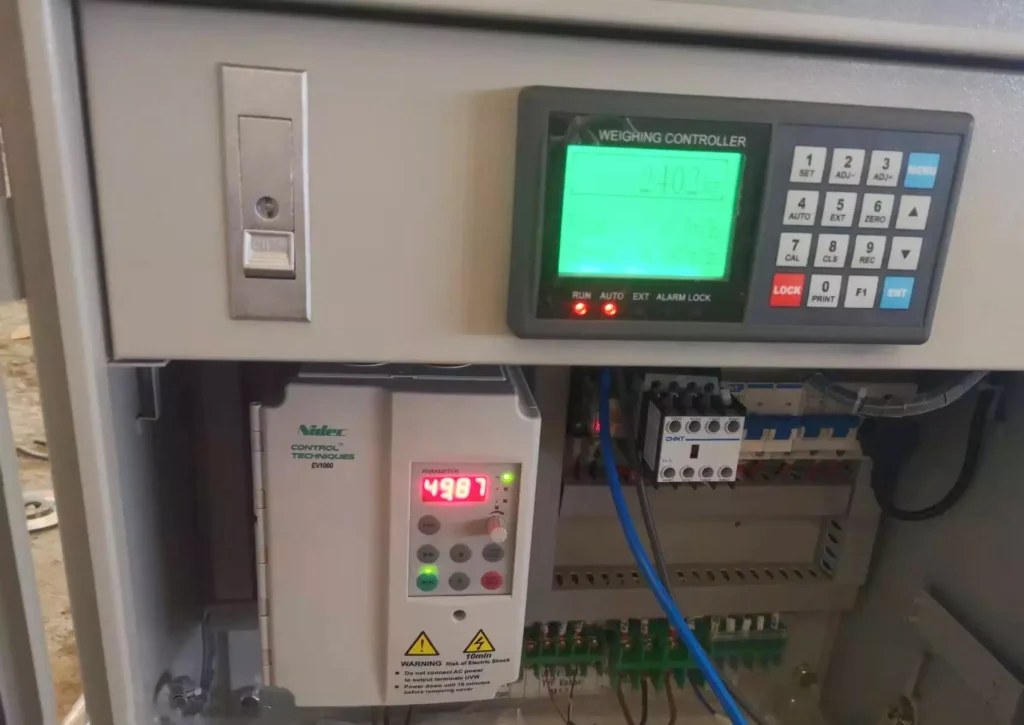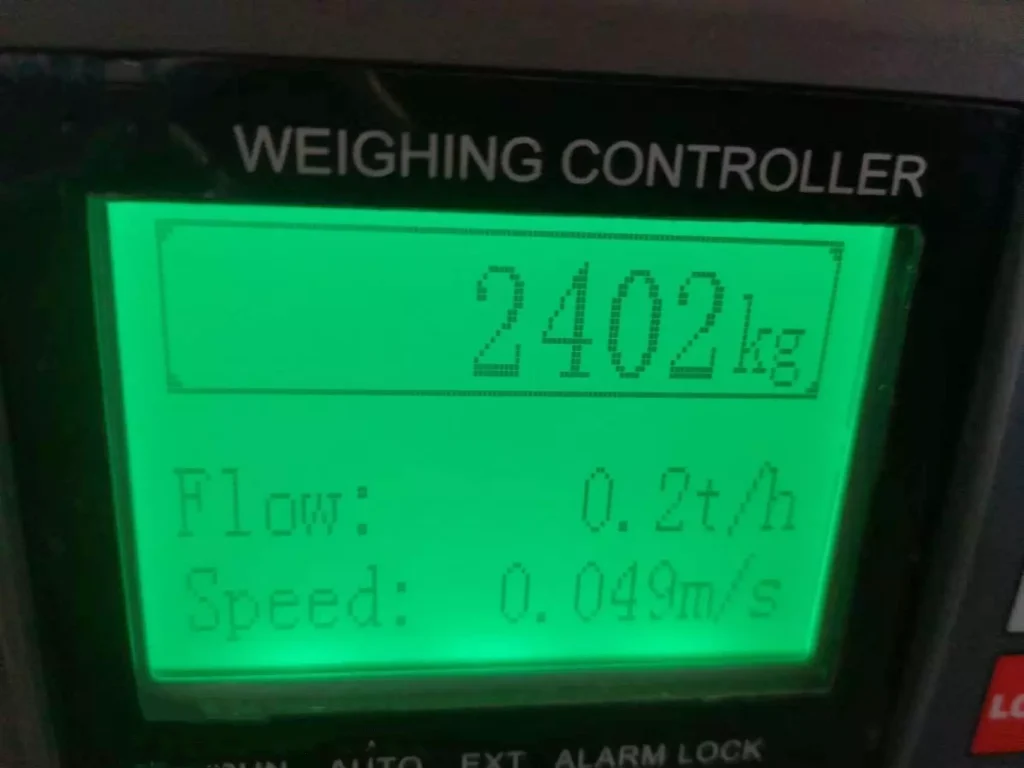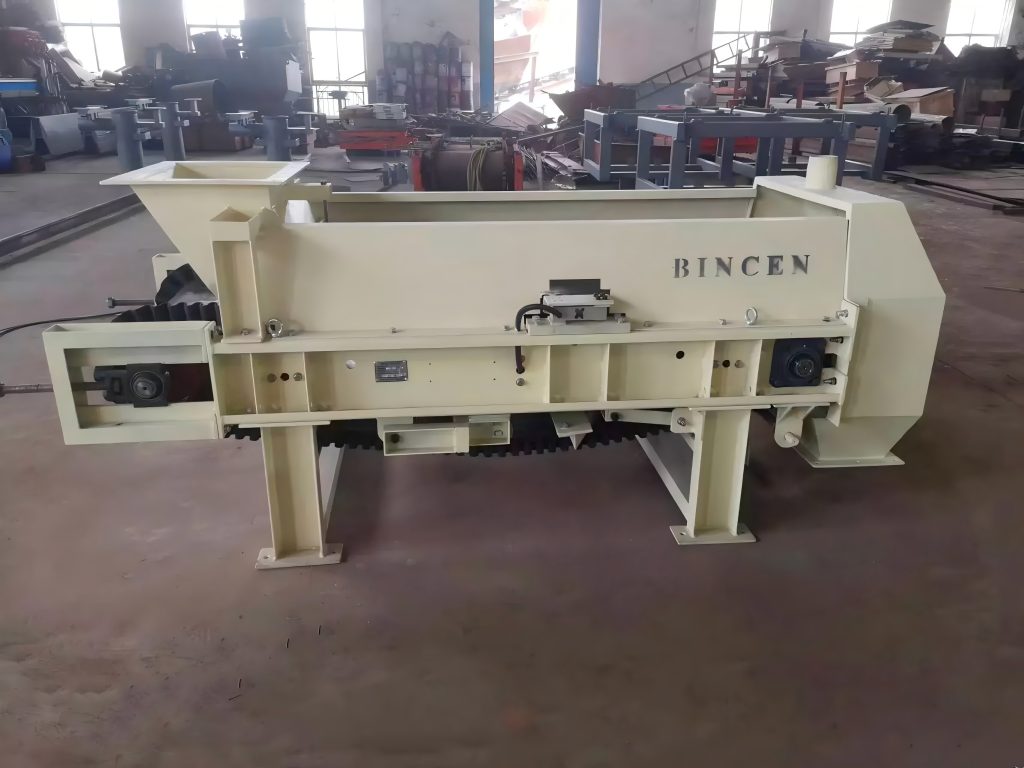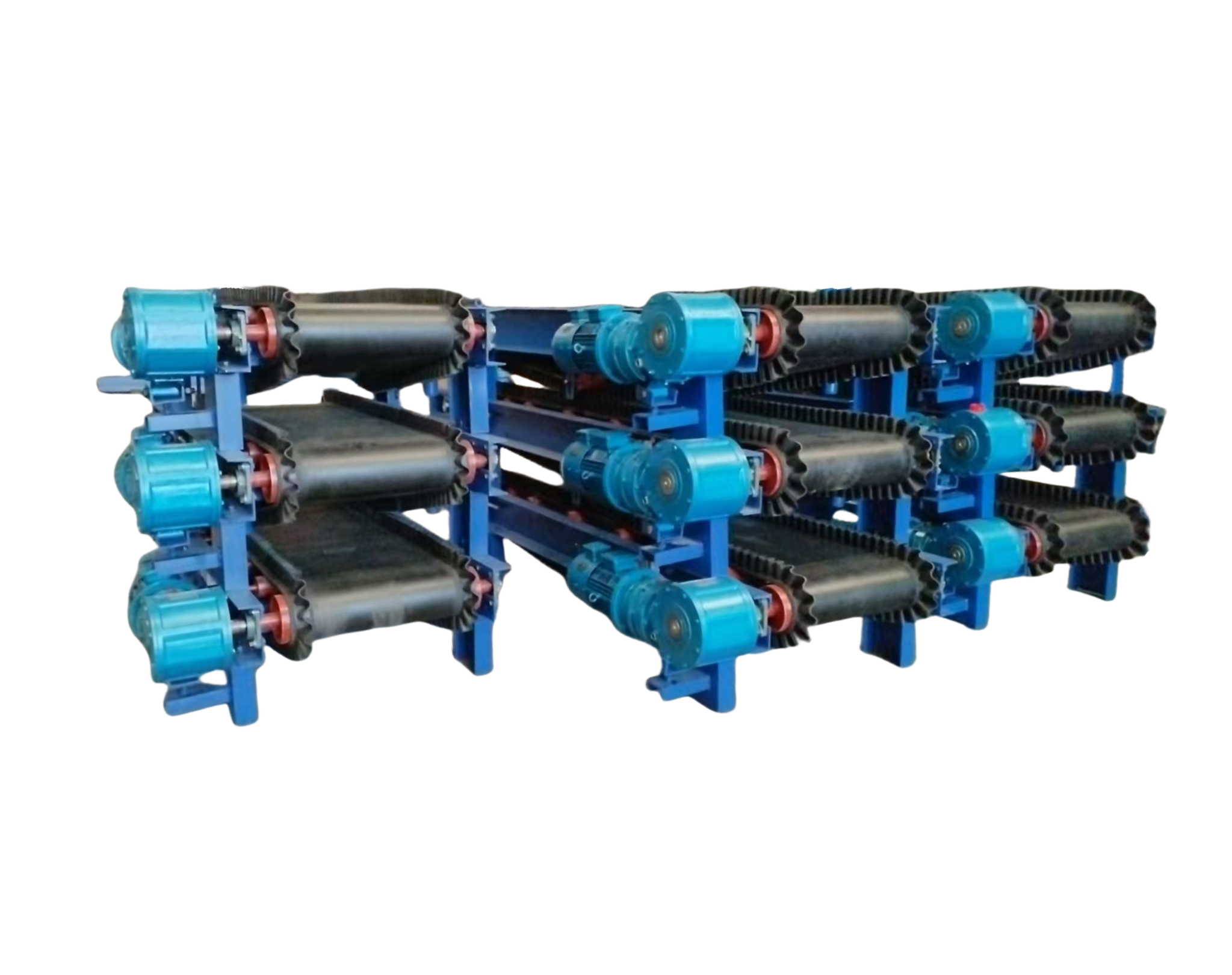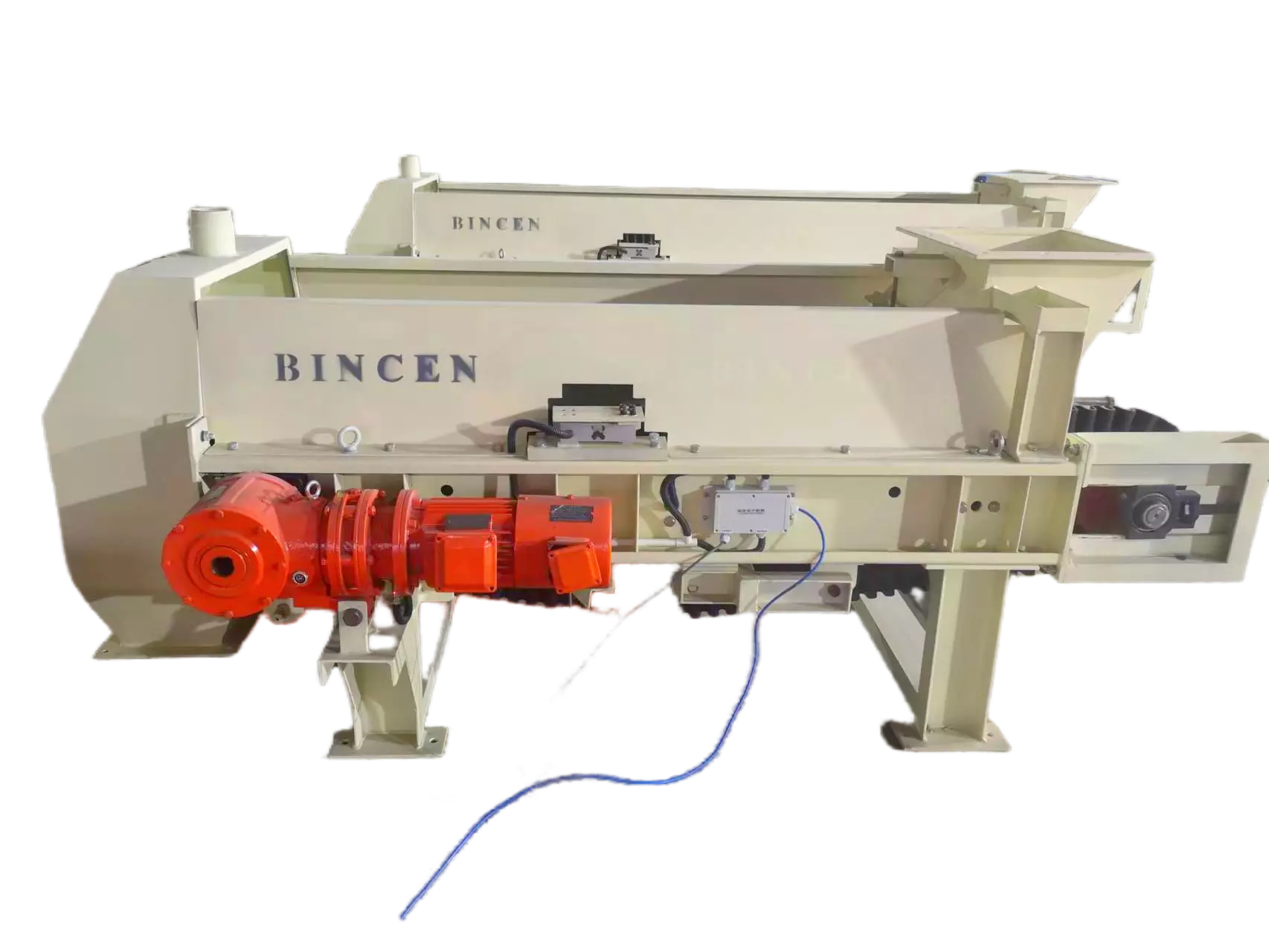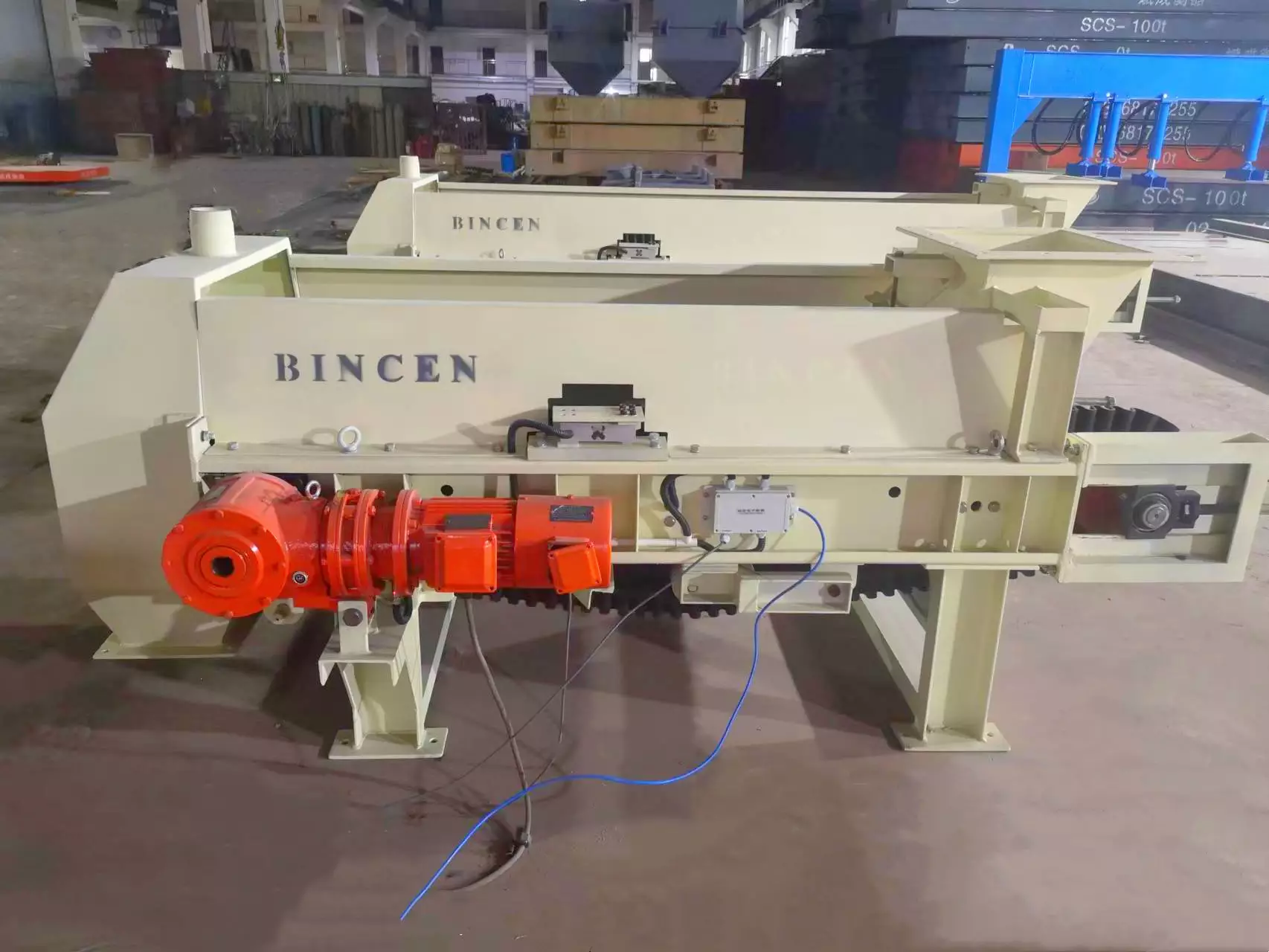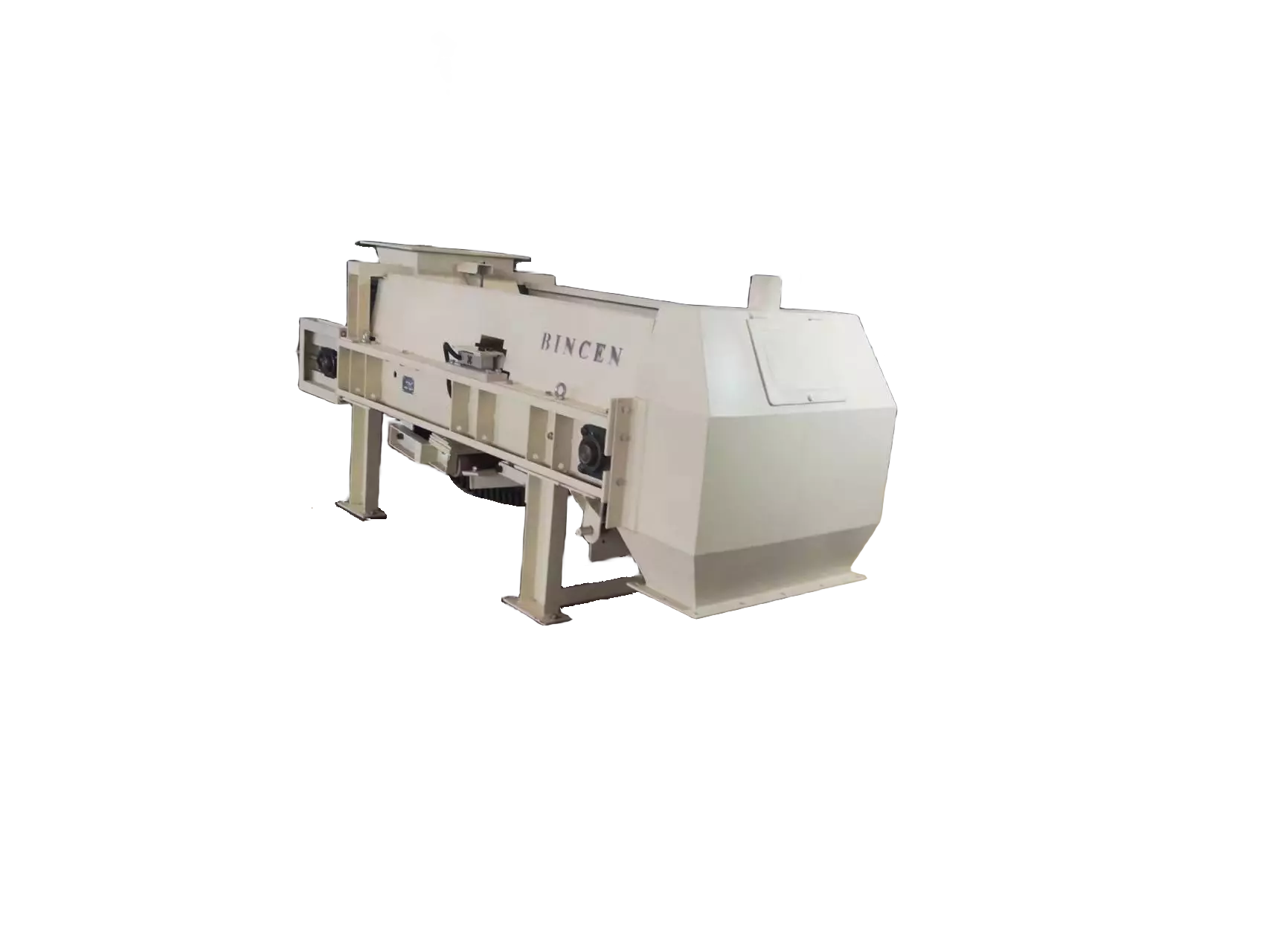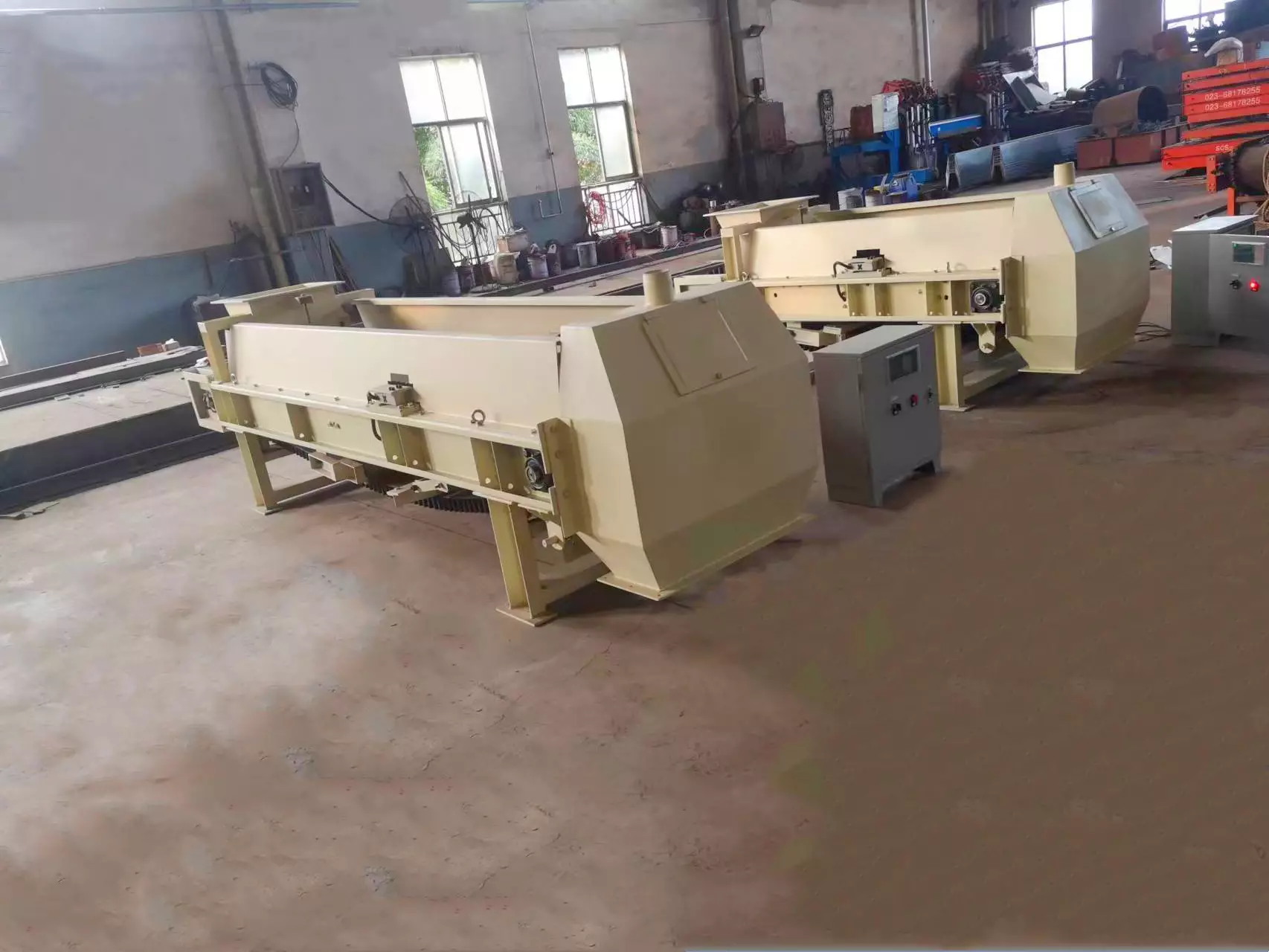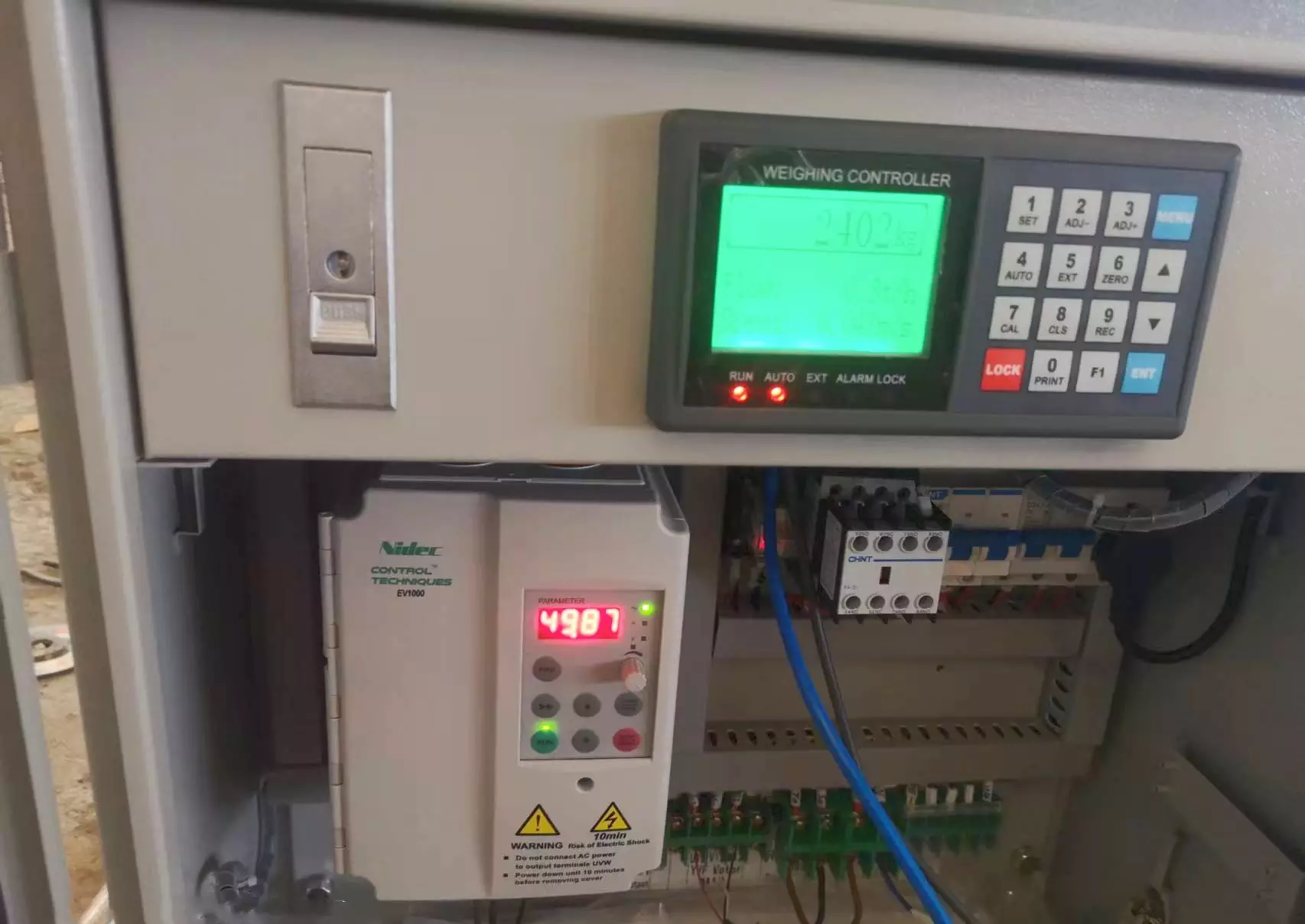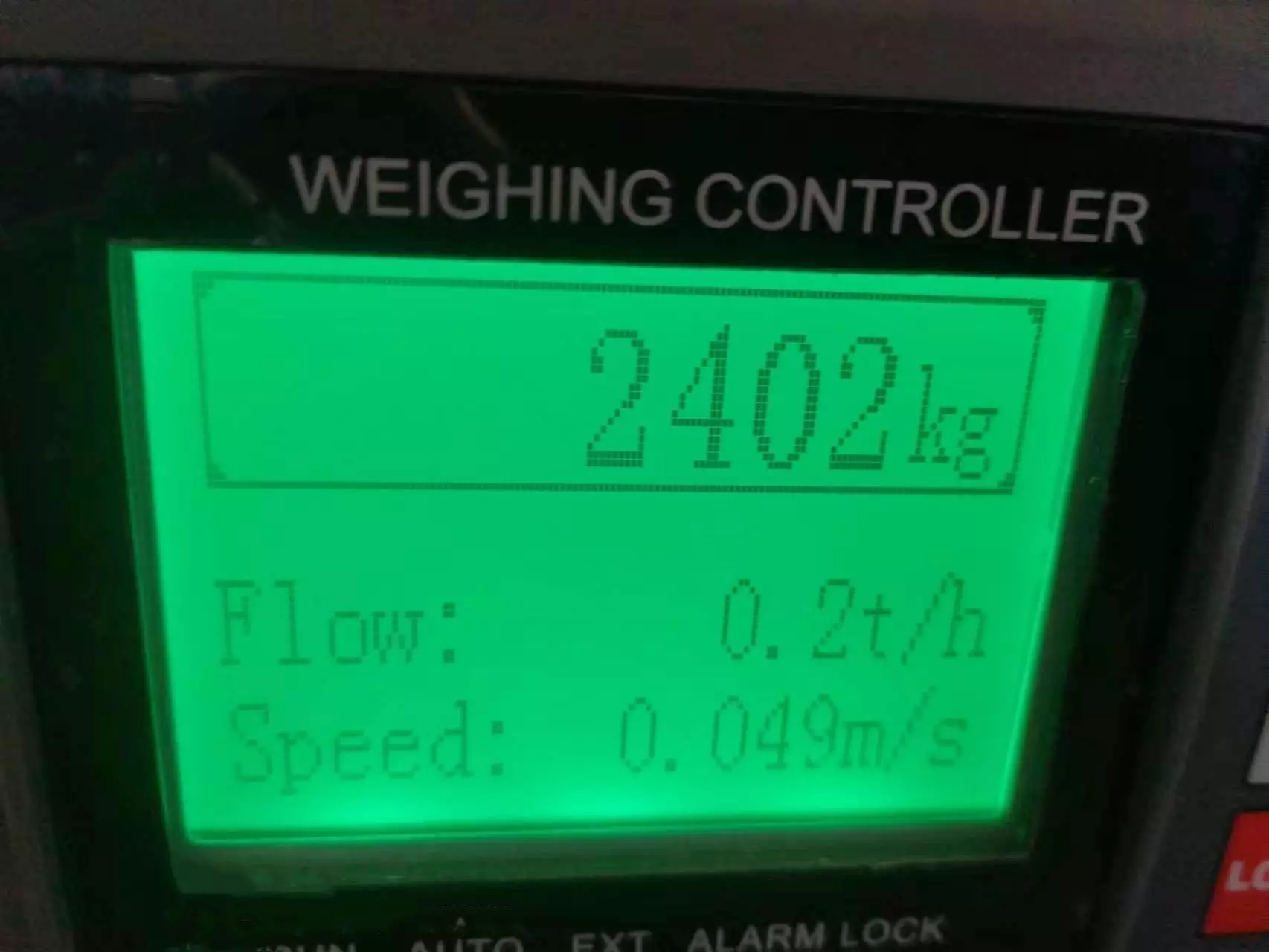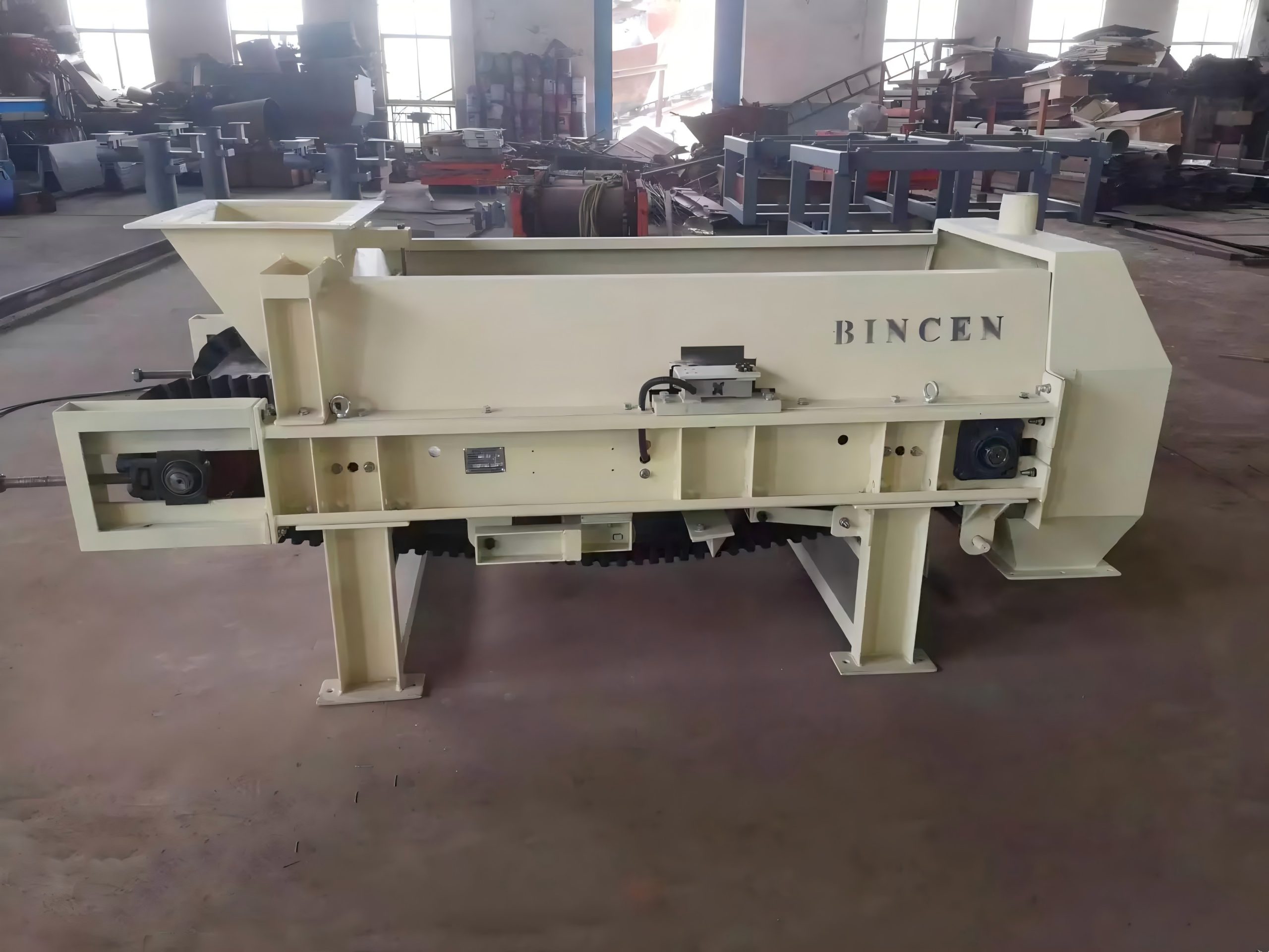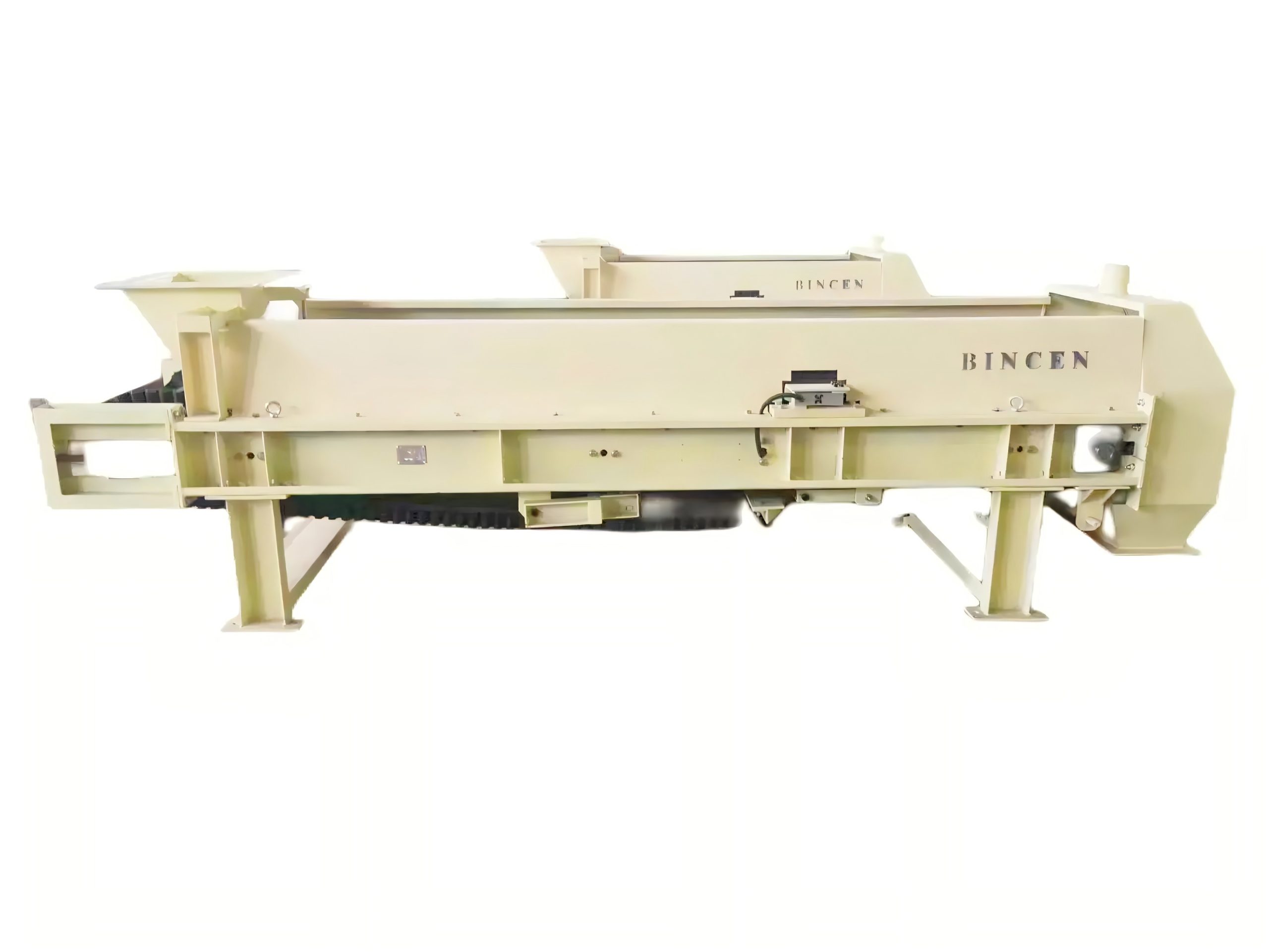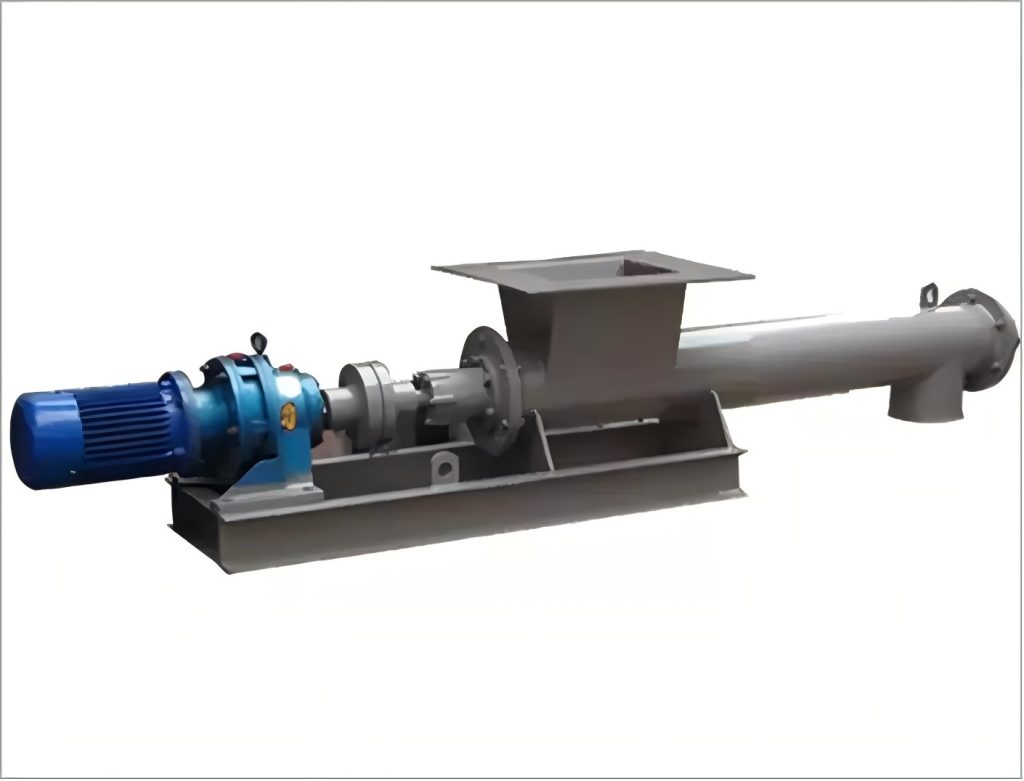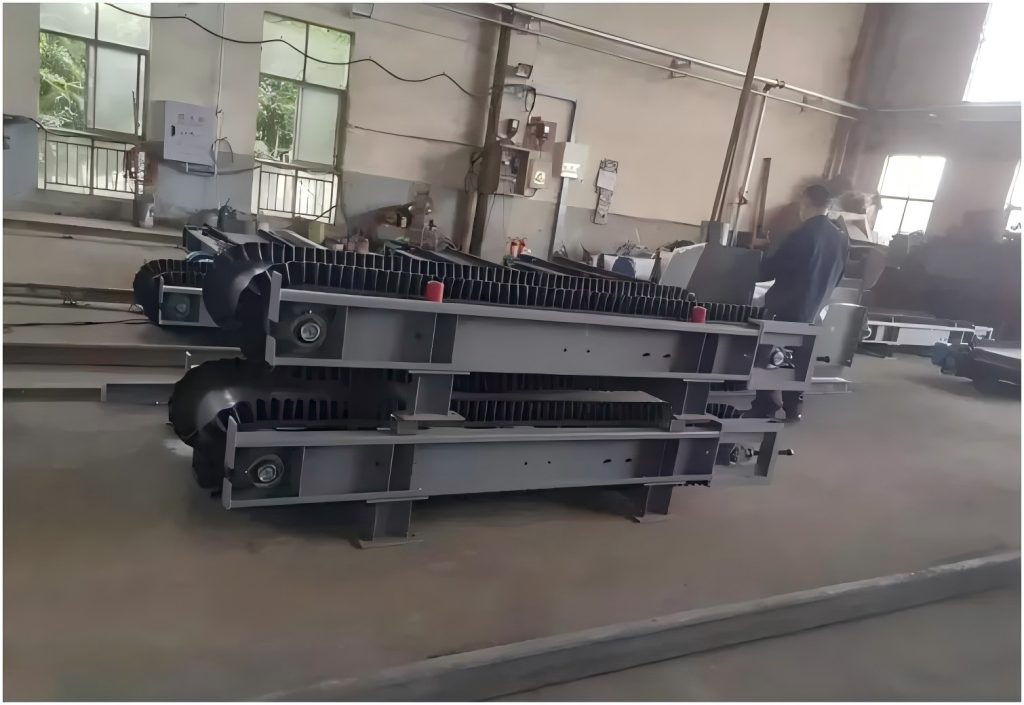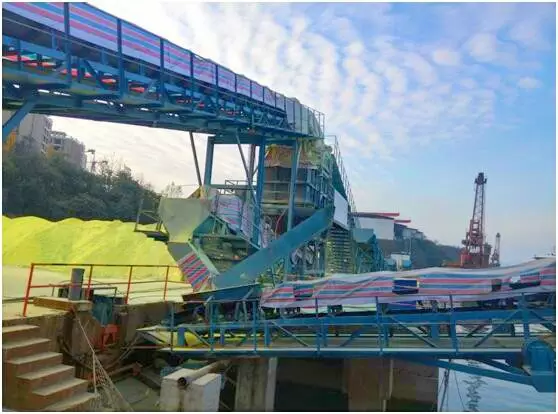Quantitative Belt Feeder
- High Accuracy: Measures with a precision of ±0.25%.
- Product Composition of Quantitative Belt Feeder: Machine frame, tail drum, belt, supporting idler, inlet and outlet, weighing device, anti-deviation alarm device, control instrument, electrical control cabinet (or operation box).
- Rich Functions: Offers a variety of features and capabilities.
- Stable Control: Maintains a steady and controlled feeding process.
- Continuous and Uniform Feeding: Delivers a steady flow of materials.
- Real-time Data Display: Provides instant information on flow rate, cumulative amount, and set feeding amount.
Bincen Quantitative Belt Feeder is designed for precise material feeding and is widely used in industries such as power, metallurgy, mining, building materials, and chemical engineering. It continuously and reliably detects the flow rate and conveying capacity of bulk materials, ensuring stable production processes.
This belt feeder consists of a frame, tail drum, belt, supporting idler, inlet and outlet, weighing device, deviation alarm device, and control instrument. It offers rich functionality, supports continuous and uniform material feeding, and provides real-time data display, making it an ideal choice for precise batching needs.
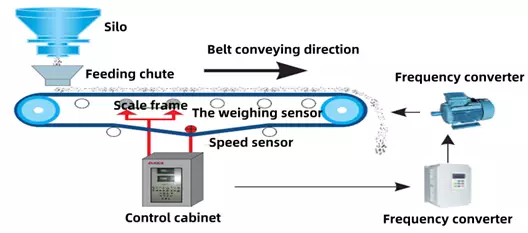
Features of Quantitative Belt Feeder
- High accuracy
- Good reliability
- Rich functions
- Stable control
- Convenient adjustment
- Multiple quantitative settings
Function of Quantitative Belt Feeder
- Continuous and Uniform Feeding: The feeder ensures a steady and consistent flow of materials.
- Accurate Weighing: The feeder can precisely measure the weight of materials throughout the feeding process.
- Real-time Data Display: The feeder provides instant information on flow rate, cumulative amount, and set feeding amount.
- Automatic Adjustment and Control: The weighing sensor and accumulator work together to automatically regulate the feeding process based on the measured weight and desired flow rate.
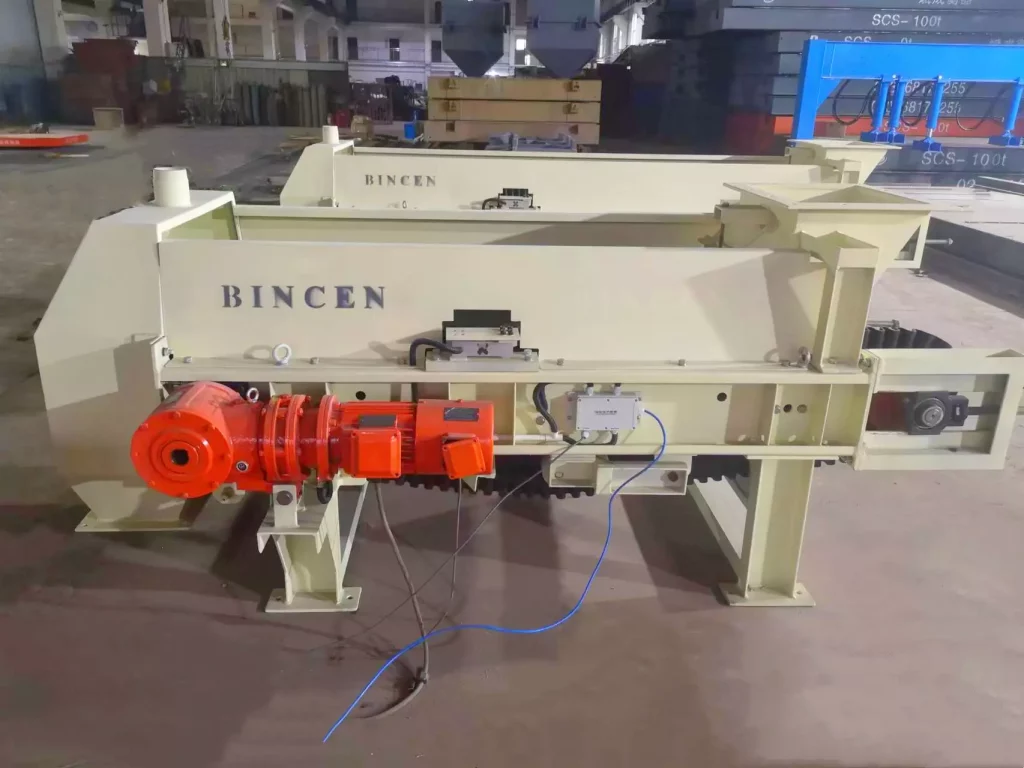
Product Composition of Quantitative Belt Feeder
1. Machine Frame
The machine frame of the quantitative belt feeder plays a supporting role in supporting all parts. The auxiliary device is composed of a belt tensioning mechanism, belt cleaning mechanism, and belt deviation prevention and correction mechanism, which is an effective measure to ensure the normal operation of the feeder.
The belt tension is completed by adjusting the adjusting nut at the tail. The lower part of the belt is also equipped with a heavy hammer-type tension device with a deviation correction function to prevent belt deviation and ensure tension.
2. Tail Drum
The tail drum is both a tensioning drum and a speed-measuring drum. The shaft end of the tail drum is equipped with a speed-measuring sensor (encoder). The speed measuring sensor has been installed and adjusted before leaving the factory and is equipped with a protective cover.
It cannot be disassembled without permission. The front side of the tail drum is provided with a belt cleaning scraper to scrape the materials adhering to the inside of the belt. This prevents the material from sticking to the tail drum, which increases the drum diameter and changes the speed.
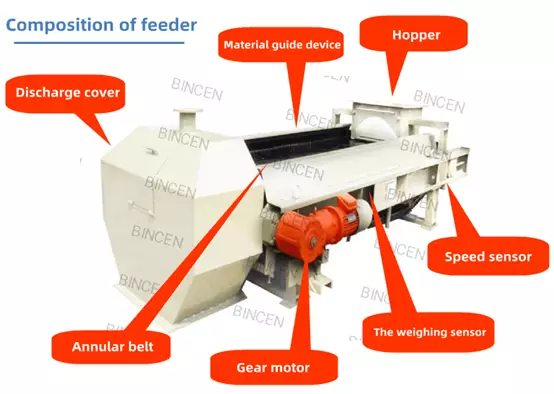
3. Belt
The belt is a customized circular flat-edge leather belt or a belt with a circular skirt according to the user’s on-site requirements. It can also be a high-temperature-resistant flame retardant belt. The skirt belt has a skirt edge of 50mm to 100mm high, to ensure that no material is scattered during operation. The tension of the belt will change with the operation time and temperature. Pay attention to adjusting the tensioning device to avoid belt deviation, to achieve the best weighing and control effect.
4. Supporting Idler
The supporting idler is a series of flat idlers supporting the belt, which should be lubricated regularly during use. To achieve the best use effect.
5. Inlet and Outlet
The inlet and outlet are provided with flanges of certain specifications to facilitate the connection with the user’s equipment.
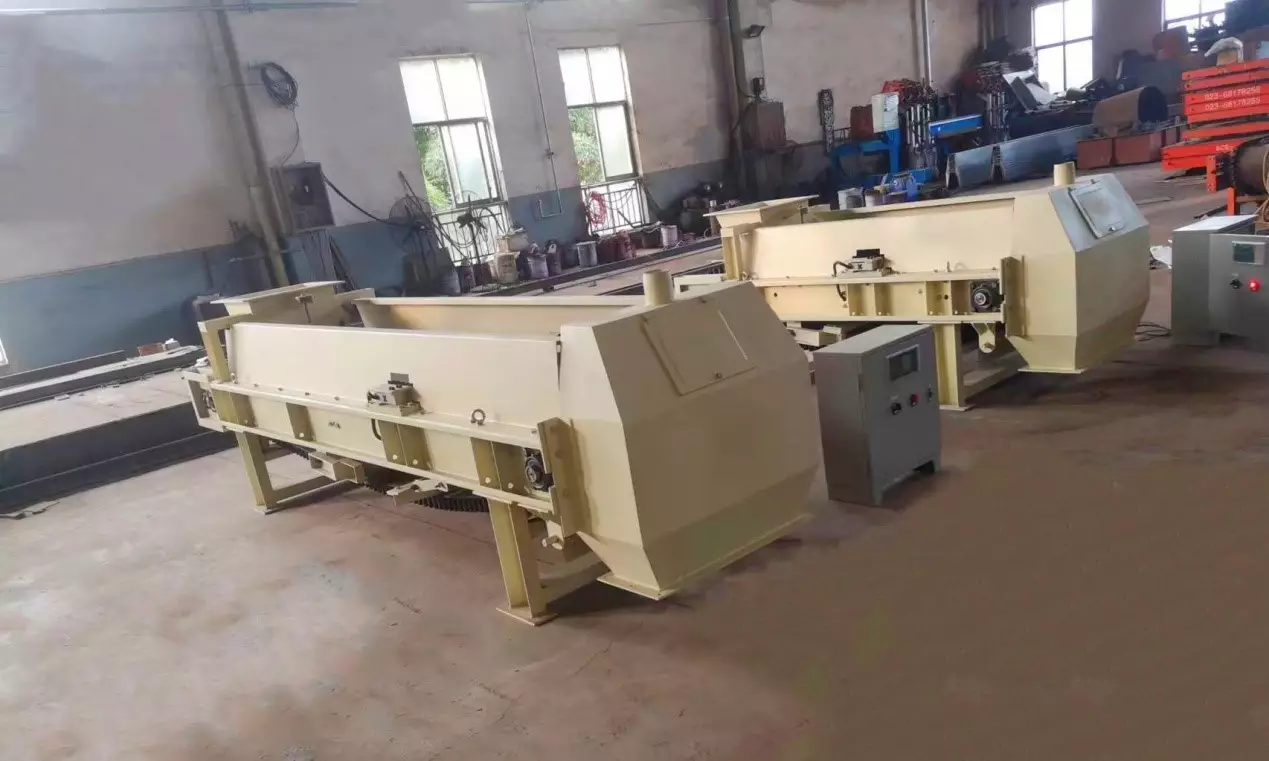
6. Weighing Device
The weighing device of the quantitative belt feeder is manufactured by introducing advanced German Schenck technology. The weighing device is connected to the frame through a cross reed. The weighing sensor is installed in the front of the device, and a counterweight body is installed in the rear to balance the whole device.
The weighing device shall be installed with enough clearance from other parts, otherwise the metering effect will be affected. The connected cross spring shall be in the horizontal and vertical directions respectively, and the position shall be accurate. The pressure bar in the force measuring device shall be aligned with the steel ball, otherwise, it shall be adjusted to prevent affecting the measurement accuracy.
The weighing device cannot bear the impact force and cannot be stepped on when in use. The weighing sensor is selected according to specific process parameters and has a certain range. Overload is not allowed.
The weighing devices are equipped with protective limit devices to prevent damage to the weighing sensor and scale body during transportation.
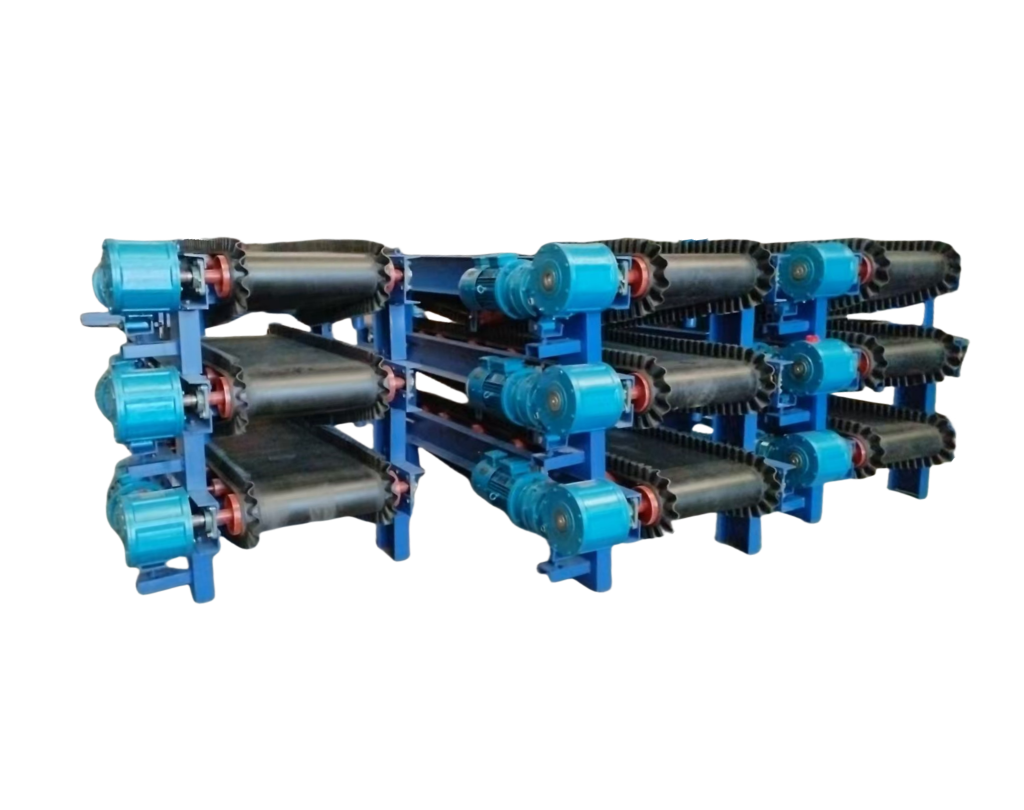
7. Anti-Deviation Alarm Device
To prevent belt deviation or even damage to the belt, the feeder is equipped with an anti-deviation switch to send a deviation signal when the belt is slightly deviated, reminding the user to adjust the belt. If the belt continues to deviate without adjustment, the system will automatically stop to prevent damage to the belt.
8. Control Instrument
The quantitative belt feeder has both metering and control functions, with manual control and automatic control functions, and 4-20mA flow current and control current output functions. The set point can be set externally or set by the instrument itself. Powerful function, stable operation, and high control accuracy.
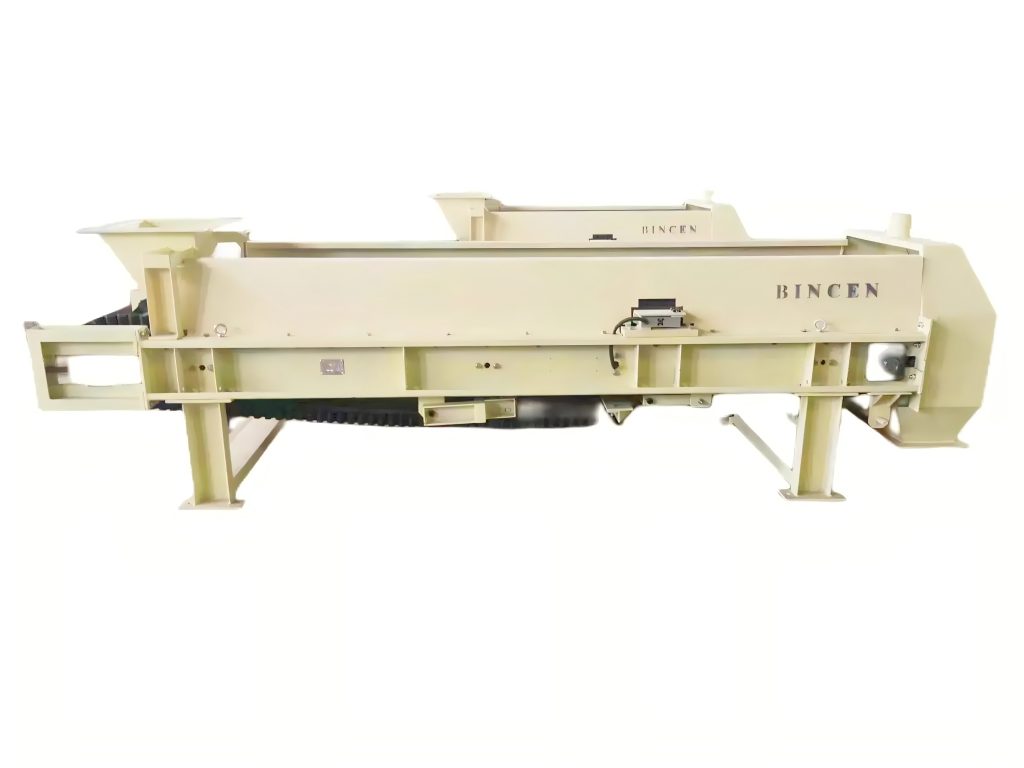
9. Electrical Control Cabinet (or Operation Box)
It is composed of various air switches, contactors, relays, frequency converters, PLCs, and other electrical components. It has manual/automatic functions, field/program control, etc. It can operate the work of each piece of equipment and the whole system and has the indication function of various working states. The interface between DCS and centralized control is reserved.
Safe Working Environment
The quantitative feeder can be designed to use the following parts for closed operation.
- Discharge cover with dust collection connection (inspection hole)
- Belt cover
- Rear and side guards
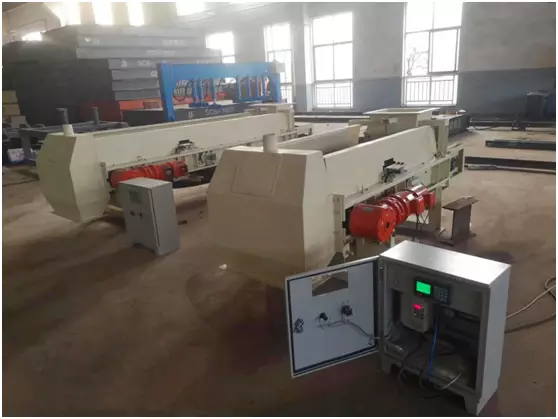
Benefits of Installing a Bincen Quantitative Belt Feeder
- Efficient Installation: Modular design and system integration minimize installation costs and labor.
- Comprehensive Support: Bincen offers technical advice, installation guidance, remote assistance, and after-sales service.
- Related Services: Elevant CE certification, customized, ODM, and OEM services are available.
- Warranty Support: Damaged accessories will be replaced by the manufacturer.
Why Choose Us?
Advantage 1: Bincen specializes in manufacturing electronic scales, ingredient controllers, instruments, and complete automation equipment. Its range of products finds extensive use in supporting construction machinery manufacturers. The weighing and batching controller boasts precise algorithms and consistent performance.
Advantage 2: Our company supplies international industrial automation control and testing equipment, industrial weighing systems, and sensor equipment to numerous renowned large and medium-sized industrial enterprises as well as aerospace industry firms in China. We pride ourselves on the reliability and credibility of our technology and products.
Advantage 3: Our team of seasoned engineers offers comprehensive sales assistance, including pre-sales consultancy for solution design, guidance on product selection, installation, and debugging during the sales process, as well as after-sales maintenance support.

